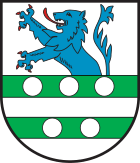Thallichtenberg

Thallichtenberg, already known as "Dal" in ancient times, arose from three districts: from the submerged Bistert, from the Dal and the Wadenau to the south-east of it, where the castle man Bertram von Wadenau had already built a house in 1285. The vassals living at Lichtenberg Castle were enfeoffed with land in the area. At the time of the French Revolution, Thallichtenberg was assigned to the canton of Kusel with the entire truce. In 1816 the Lichtenberg mayor's office in the canton of Baumholder came into being.
Until 1822, the place was the official seat of Mairie and mayor, at the foot of Lichtenberg Castle, the largest castle ruin in Germany (425 m long), Thallichtenberg is a lively, clean rural residential community, 191 hectares of which are forest. A multi-purpose hall, new development areas, sports facilities, restaurants with overnight accommodation make the recognized tourist location attractive as a pleasant residential community. Above the village, at Lichtenberg Castle, there is a youth hostel with 106 beds, a geology museum (Geoskop) and the rebuilt tithe barn with the Musikantenland museum and a branch of the Palatinate Museum for Natural History, Bad Dürkheim.
Description of the coat of arms:
In a divided shield above in silver a growing, red armored and tongued, blue lion, below divided three times by green and silver, on the green bars five silver balls 3: 2






